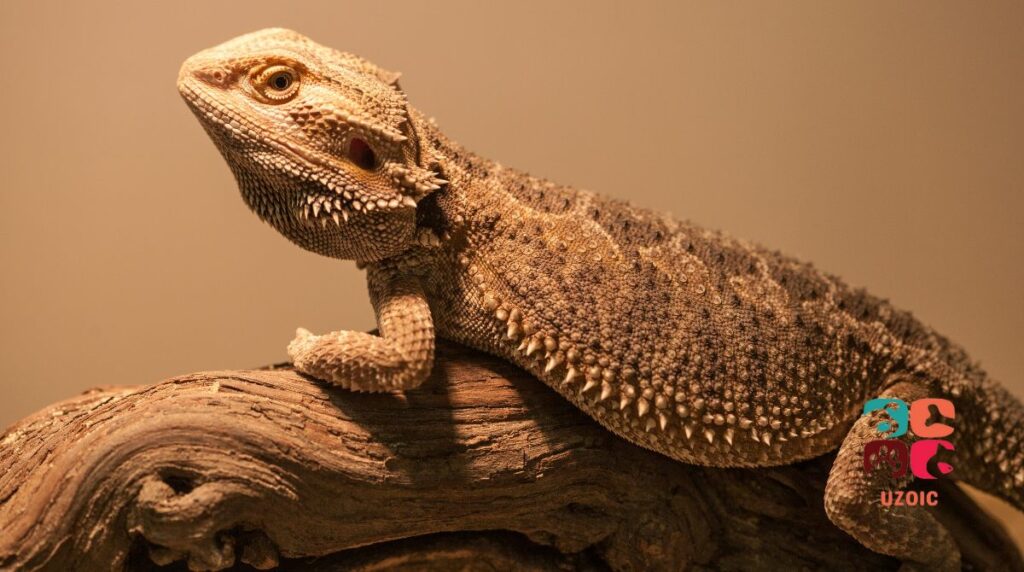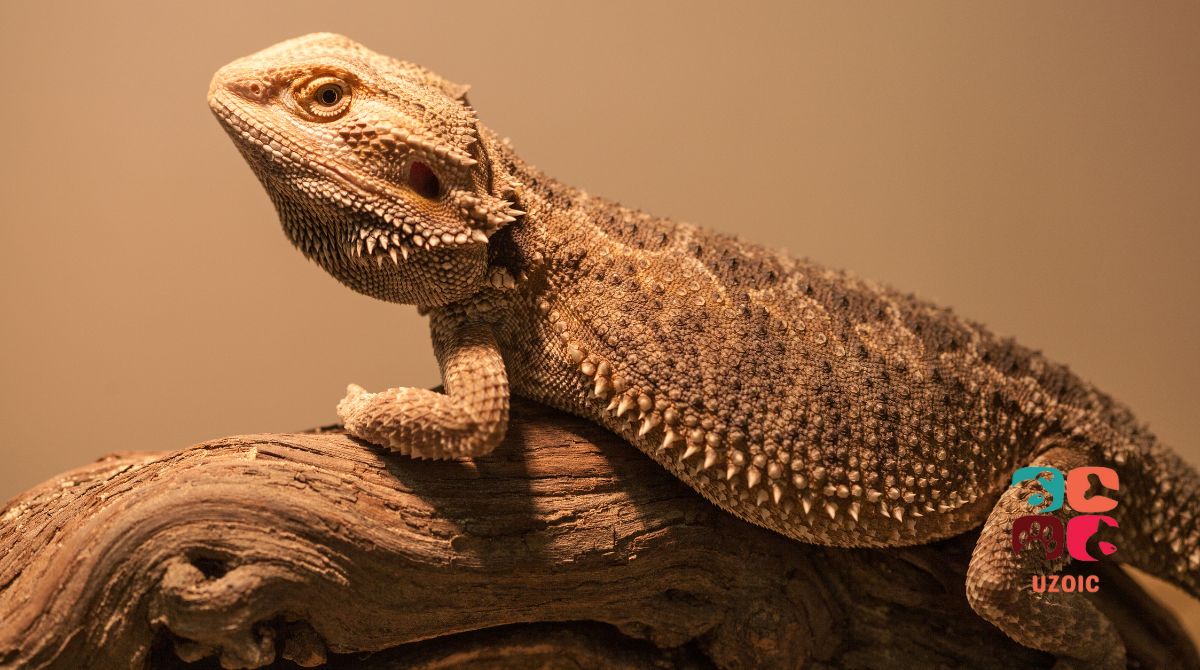Do you have a Bearded Dragon that walks on its wrists? If so, you’re probably wondering why it’s doing that. It’s not normal for Bearded Dragons to walk on their wrists, so there must be a reason why they’re doing it. In this blog post, we will discuss the possible reasons why your Bearded Dragon is walking on its wrists and what you can do to help correct the behavior.
We received a recent question from our readers: “why is my bearded dragon walking on its wrists?” While it may seem like a strange thing for your pet to do, there is actually a good reason for it!
Table of Contents
Why Is My Bearded Dragon Walking On Its Wrists?

If you have a Bearded Dragon walking on its wrists, they likely have a medical condition that is preventing them from walking straight.
Reason#1: Metabolic Bone Disease (MBD)
Your Bearded Dragon is walking on its wrists is that it’s suffering from a condition called Metabolic Bone Disease (MBD). MBD is a common problem in Bearded Dragons and can be caused by a lack of calcium or vitamin D in their diet. If your Bearded Dragon has MBD, you will need to take them to the vet for treatment.
Reason#2: Overweight
Another possible reason why your Bearded Dragon is walking on its wrists is that it’s overweight. If your Bearded Dragon is carrying around extra weight, it can put a lot of strain on their legs and joints, which can lead to pain and discomfort. To help your Bearded Dragon lose weight, you will need to adjust its diet and exercise regime.
How Do I Know If My Bearded Dragon Has MBD?
If you have a bearded dragon, it’s important to be aware of the signs and symptoms of Metabolic Bone Disease (MBD). MBD, or Metabolic Bone Disease, is a condition that can occur when your pet isn’t getting enough calcium or vitamin D3. Without these nutrients, your bearded dragon’s bones can become weak and deformed.
One of the first signs of MBD is a change in your pet’s appetite. Bearded dragons are typically very active and alert, but if they’re not feeling well, they may become lethargic and stop eating. You may also notice that your bearded dragon seems to be having difficulty moving around, as the condition can cause muscle weakness.
They start to wobble due to swollen limbs. You may notice your beardie is walking on its wrists. In severe cases, MBD can lead to paralysis.
To summarize, here is the list of possible symptoms that suggest your Bearded Dragon may have Metabolic Bone Disease MBD:
- Swelling of the face and lower jaw
- Receding lower jaw
- Swollen limbs
- Difficulty moving around
- Loss of appetite
- Walking on wrist
- Tremors
- Twitching
- Lethargy
- Paralysis
- Hard Knobs On Long Bones
- Anorexia
- Fracture
Bearded dragons with MBD will look a bit deformed as it is a disease that impacts the bone structure. For example, a beardie walking on wrists or having bent wrists is a dead giveaway of bone disease in your pet. If you think your bearded dragon might have MBD, it’s important to take them to the vet.
Your vet will perform X-rays and blood tests to diagnose MBD. Treatment for MBD typically involves dietary supplements and calcium/vitamin d3 injections. With early diagnosis and proper treatment, you can successfully manage most cases of MBD.
Top Causes Of MBD In Bearded Dragons
Nutritional imbalances lead to MBD in Bearded dragons. Bearded dragons need the right amount of calcium and vitamin d3. Usually, it is found that high phosphorous levels and low calcium and vitamin d3 lead to MBD in reptiles [Source: USASK Western College Of Veterinary Medicine].
The most common nutritional cause of MBD is a diet high in phosphorous and low in calcium. Bearded dragons need a balanced nutritional diet that is adequate in calcium and low in phosphorous to prevent MBD. Without nutrition, the bones do not get the minerals they need to stay strong and healthy, which leads to MBD.
Further, Vitamin D is essential for calcium absorption in bearded dragons. Bearded dragons get vitamin D from exposure to sunlight or a UVB light. Without enough vitamin D, your bearded dragon will not be able to absorb calcium properly, which can lead to MBD. So pay close attention to the UVB lighting in your bearded dragon’s enclosure.
Can You Reverse MBD In Bearded Dragon?
Yes, you can potentially reverse MBD in Bearded Dragon if you catch it early enough and start treatment immediately.
MBD is a condition that can occur in bearded dragons when they do not receive the correct amounts of calcium and vitamin D3. Symptoms include lethargy, softening of the bones, and deformities of the spine and limbs. If left untreated, MBD can be fatal. While there is no cure for MBD, it can be reversed if caught early enough.
The key to reversing MBD is to ensure that your beardie gets the proper nutrition, including a diet rich in calcium and vitamin D3. Additionally, UVB light is essential for the absorption of calcium and vitamin D3. Therefore, by providing your beardie with the proper care, you can help to reverse the effects of MBD.
Conclusion
In conclusion, a bearded dragon walking on its wrists would be your first visible symptom that something is wrong with the bones of your beardie. By referencing the possible symptoms in this article with the actual symptoms displayed by your bearded dragon, you should be able to conclude whether or not your beardie has a bone disease that is causing it to walk on its wrists.
If you’re not sure why your Bearded Dragon is walking on its wrists, it’s best to take them to the vet for a check-up. They will be able to determine what the underlying cause is and provide you with the appropriate treatment. In the meantime, try to make sure that your Bearded Dragon is getting enough calcium and vitamin D in their diet and not carrying around extra weight. By taking these precautions, you can help to prevent your Bearded Dragon from walking on its wrists. Thanks for reading!


